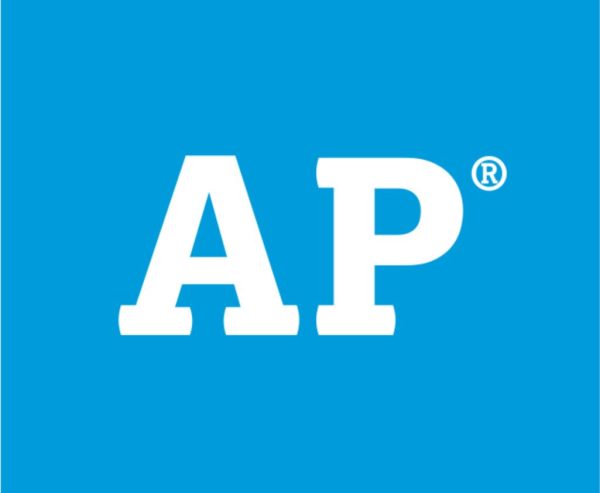A Look into the Future

“What am I going to do after high school?”, “Should I even apply to colleges?”, and “Why am I even in high school?” are all valuable questions that high school students are asking themselves… getting some real world training is capable of helping a student “get a jump start on life”.
“What am I going to do after high school?” “Should I even apply to colleges?” “Why am I even in high school?” These are all valuable questions that high school students ask themselves during their four years here. I, being a high school student myself, have also pondered these questions. After a number of my friends decided to drop out of high school, I questioned “what happens to them next?” and “How could a drop out support themselves?”
After some consideration, I decided to talk to a counselor. Ms. Wigly, a school counselor here at NFHS, gave me some helpful insight. She stated that getting some real world training is capable of helping a student “get a jump start on life”.
So I performed some research and found that due to the cost of living increasing, as well as a variety of other factors, that it is in a student’s best interest to not only receive a diploma from high school, but also pursue further education afterwards. College provides students with a portal for advancing their education and getting real-world experiences necessary for managing a life out of school. As the economy takes a turn for the worse, it is becoming a requirement that jobs paying minimum wage obtain a high school diploma. It is estimated that “every 29 seconds, another student gives up on school” (Background). This is detrimental not only to the hurting economy, but also to every dropout’s future. Not completing a secondary education is setting up oneself for failure, and it comes with a name and a price. When people think of a high school dropout, a negative connotation comes with it.
Some might inquire: “What exactly is a dropout?” By definition, a dropout is an individual who has un-registered out of high school with no intentions of registering again or getting a credential of equal value, namely a G.E.D. A dropout can be anticipated by certain factors such as:
- “Grade Retention (being held back a grade)
- Poor academic performance
- ..[Re]location during high school
- High absenteeism
- Feeling that no [one]…cares about his or her welfare” (Background).
While dropping out may seem like an easy way out, there are a myriad of consequences. Without having a high school diploma or a G.E.D., a student has shut the labor market door on their future. That alone is damaging enough, but it goes further; there are also resulting consequences. Students that drop out of high school also have a greater chance of needing public assistance, being single parents, and going to jail/prison. “One in every ten young male high school dropouts is in jail or juvenile detention” (Dillon). While that is quite dramatic, “82 % of America’s prisoners are high school dropouts (Background)”. That is an outstanding statistic that personally makes me think twice about the importance of education.
Since the cost of living has greatly increased, higher paying jobs are now a necessity in order to maintain a comfortable style of living. One of the three keys to survival is shelter, but the cost of shelter differs depending on how you buy. The costs to rent [are]: $700 and up to buy [are]: $950 and up [for each month] (Baltezar). In order to keep a house warm and have running water, one must pay for utilities, which runs about $325 per month (Baltazar).This is only the beginning though, as transportation is mandatory in today’s fast paced world. What it takes in order to transport oneself has certain financial aspects; including an estimated, $110 for gas, $230 for car payments, and $150 for taxi/car service per month. Eating is also a necessity in order to live and function properly. The cost of food does not seem very high, however it adds up when three meals a day are necessary, and groceries can run up to $425 per month, eating out results in spending $400 a month (Baltazar). Lastly, you need insurance which runs from “$300 per month” (Baltazar). The bottom line is that approximately $2300 to $2740 will be spent in a month, not including any other expenses. This means that in order to sustain a life, earning about $30,000 in a year is required.
That might not seem like much, but minimum wage is $7.25 an hour, and an average job requires about 40 hours a week. Multiply that by 52 weeks in a year, and it totals to about $15,080, which is far below the previous estimate; therefore, it is nearly impossible to maintain a basic lifestyle on minimum wage alone.
It would greatly benefit ant student to not only finish high school and receive a diploma, but to further that education in order to earn higher wages and live a more comfortable style of living. High school fabricates a rope leading to the success of your future, and college, along with outside experience, helps make that rope stronger. Without this style of learning, there are many risks of being caught in the traps and trials of life. Continuing to persevere throughout high school and college will pay off in the future by allowing a student a more assured and effortless life style.
_______________
Work Cited
Baltazar, Amanda . “What Does It Cost to Study Live and Work in Atlanta Georgia.” pdnedu. Emerald Expositions, 29 Mar. 2011. Web. 13 Jan. 2014. http://www.pdnonline.com/pdnedu/What-Does-It-Cost-2684.shtml.
“Background on High School Dropouts.” Do Something.org. N.p., N.d. Web. 13 Jan. 2014. <://www.dosomething.org/actnow/tipsandtools/background-high-school-dropouts>.
Dillon, Sam. “Study Finds High Rate of Imprisonment Among Dropouts .” The New York Times. The New York Times Company, 08 Oct 2009. Web. 13 Jan 2014. <http://www.nytimes.com/2009/10/09/education/09dropout.html?_r=0>.

Aleigh Guerndt prefers to keep to herself, although she is unafraid to venture out of her comfort zone and take ferocious chances. Her drive for what she...











